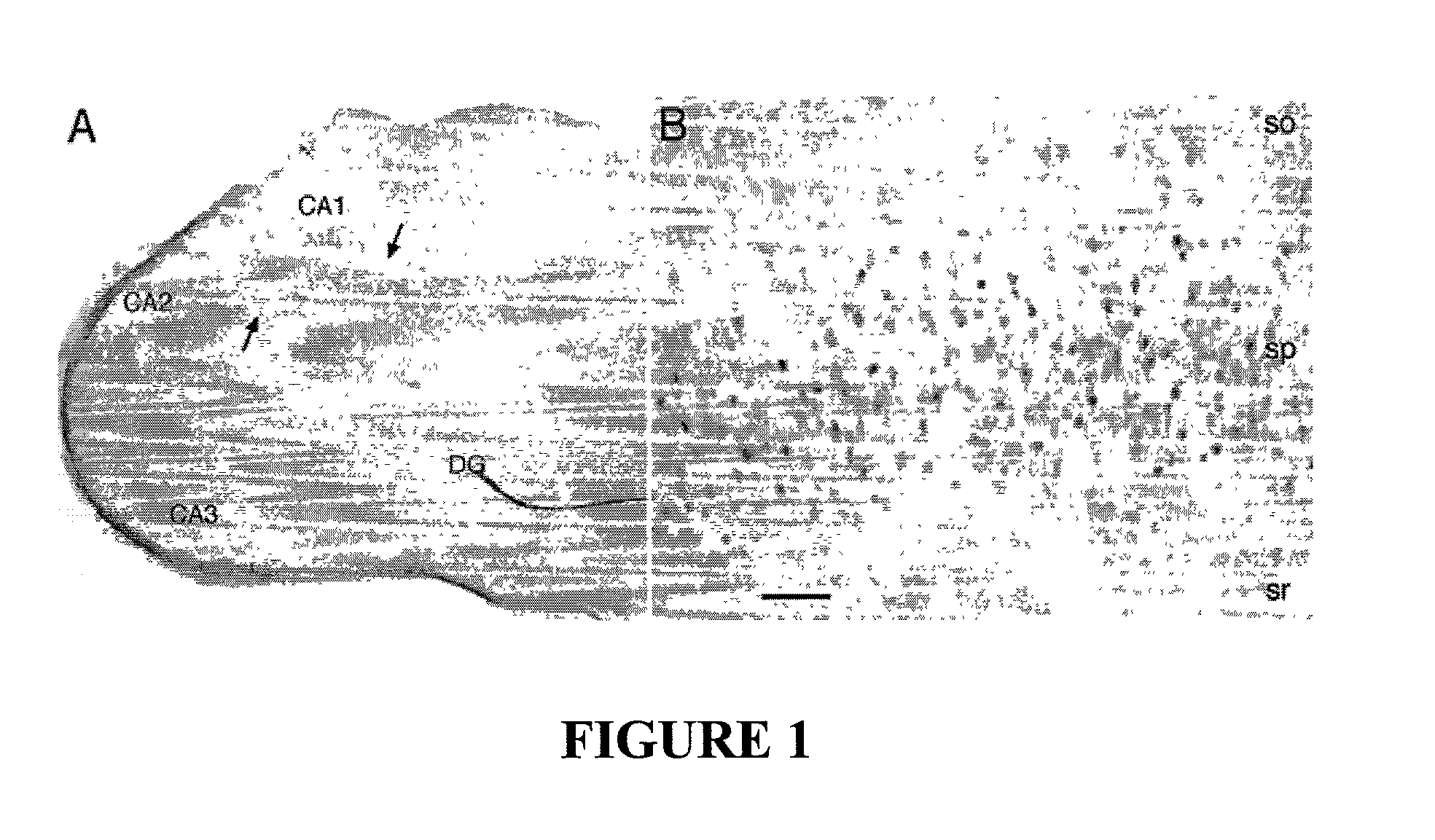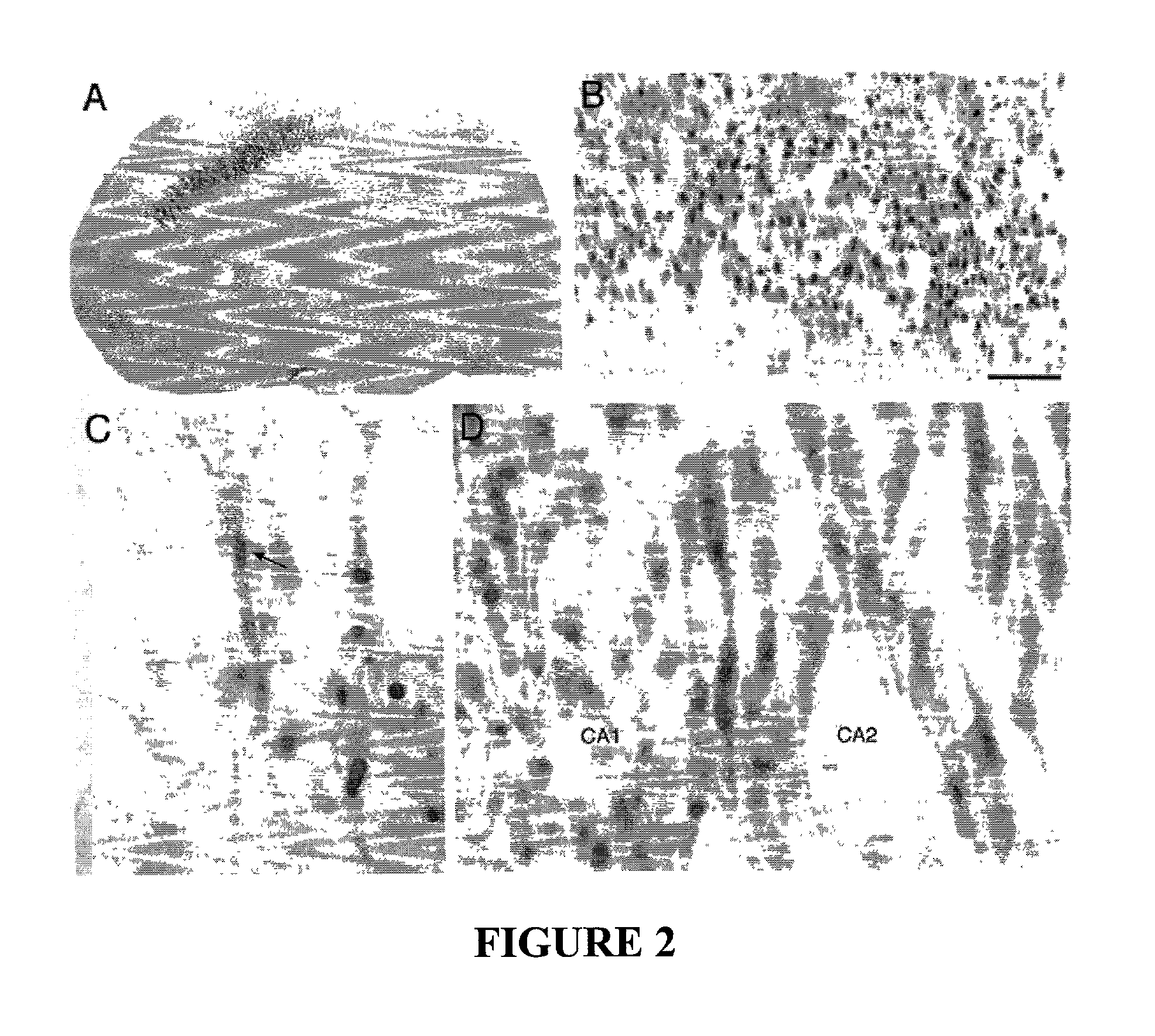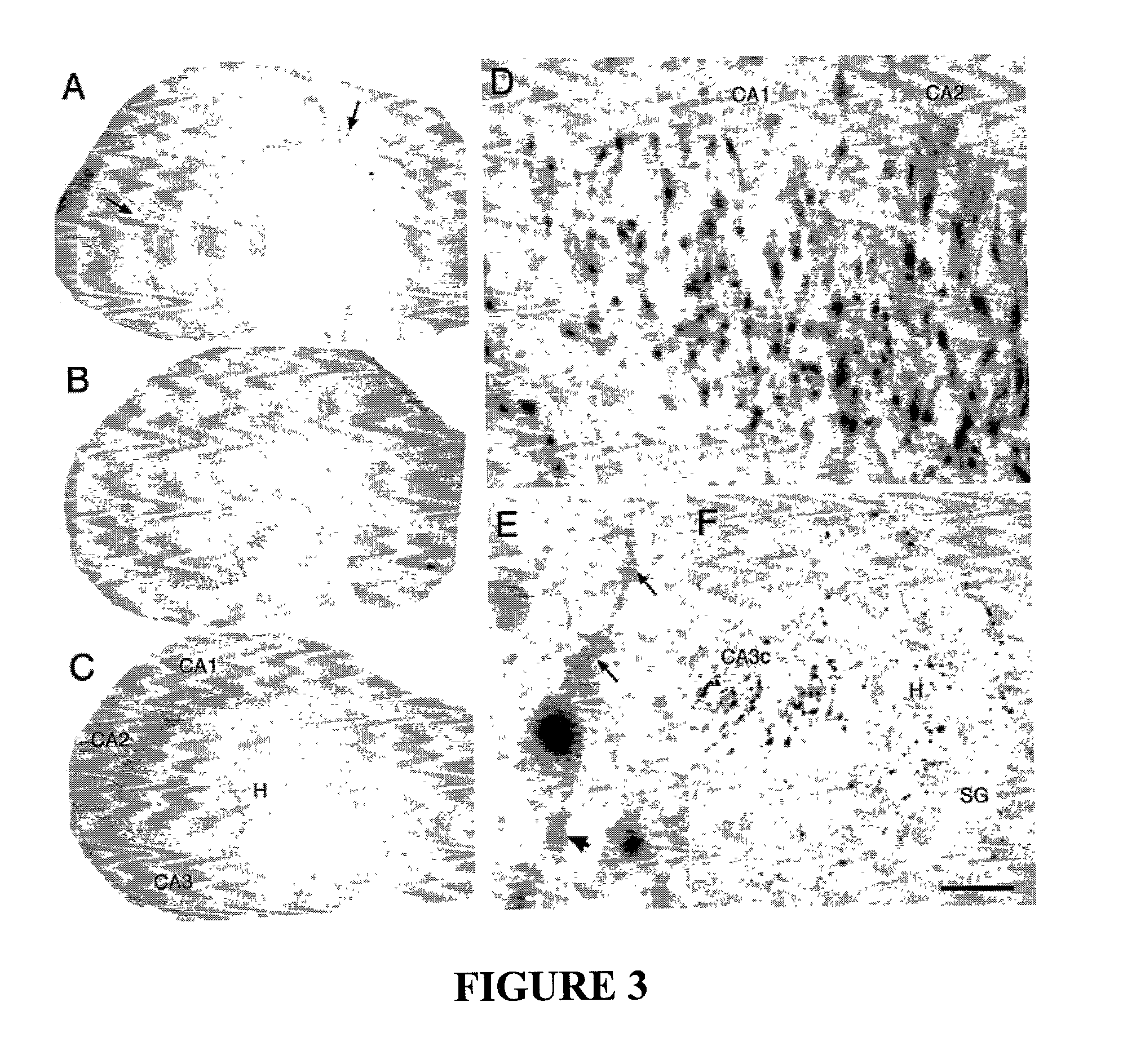Determining the effect of a substance on sequestration, uptake, and accumulation of amyloid in brain cells
a technology of amyloid sequestration and brain cells, applied in the field of medical disease models and interventions, can solve the problems that many in vivo or in vitro models are unable to produce some of the important features of alzheimer's diseas
- Summary
- Abstract
- Description
- Claims
- Application Information
AI Technical Summary
Benefits of technology
Problems solved by technology
Method used
Image
Examples
example 1
I. Materials and Methods
[0171]A. Preparation and Maintenance of Hippocampal Slice Cultures
[0172]Organotypic hippocampal cultures were prepared using the technique of Stoppini et al. (1991). Briefly, hippocampi were harvested from brains of 9–12 days old Sprague-Dawley rat pups under sterile conditions. Sections were cut (400 μm thick) perpendicular to the long axis of hippocampus using a Mclllwain tissue chopper and were collected into a cutting medium consisting of MEM with Earle's salts (Gibco, Rockville Md.), 25 mM HEPES, 10 mM Tris base, 10 mM glucose, and 3 mM MgCl2 (pH 7.2). Slices were positioned onto 30 mm cell culture inserts (Millicell-CM, Millipore, Bedford, Me.) that were placed in 6 well culture trays with 1 ml of growth medium per well [growth medium: MEM with Hank's salts (Gibco), 20% horse serum, 3 mM glutamine, 25 mM HEPES, 5 mM NaHCO3, 25 mM glucose, 0.5 mM ascorbate, 2 mM CaCl2, 2.5 mM MgCl2, 0.5 mg / 1 insulin, and penicillin, pH 7.2]. The cultures were incubated a...
example 2
[0206]An embodiment of the invention drawn to a pharmaceutical composition and the use of that composition to treat neurodegenerative diseases such as Alzheimer's disease. The composition alleviates the symptoms of characteristics associated with Alzheimer's disease such as intracellular uptake of amyloid protein, amyloid accumulation or plaque formation,
[0207]A patient in need of intervention for Alzheimer's disease is selected based on currently used diagnostic guidelines and evaluation criteria such as those detailed: by the National Institute of Neurological and Communicative Disorders and Stroke-Alzheimer's Disease and related Disorders Association (NINCDS-ADRDA), the Alzheimer's Disease section found in the Diagnostic and Statistical Manual of Mental Disorders 4th edition (DSM-IV), by the National Institute of Neurological Disorders and Stroke and the Association pour la REcherche et 1'Enseignement en Neurosciences (NINDS-AIREN), and / or by the California Alzheimer's Diseases D...
PUM
| Property | Measurement | Unit |
|---|---|---|
| Fraction | aaaaa | aaaaa |
Abstract
Description
Claims
Application Information
 Login to View More
Login to View More - R&D
- Intellectual Property
- Life Sciences
- Materials
- Tech Scout
- Unparalleled Data Quality
- Higher Quality Content
- 60% Fewer Hallucinations
Browse by: Latest US Patents, China's latest patents, Technical Efficacy Thesaurus, Application Domain, Technology Topic, Popular Technical Reports.
© 2025 PatSnap. All rights reserved.Legal|Privacy policy|Modern Slavery Act Transparency Statement|Sitemap|About US| Contact US: help@patsnap.com



